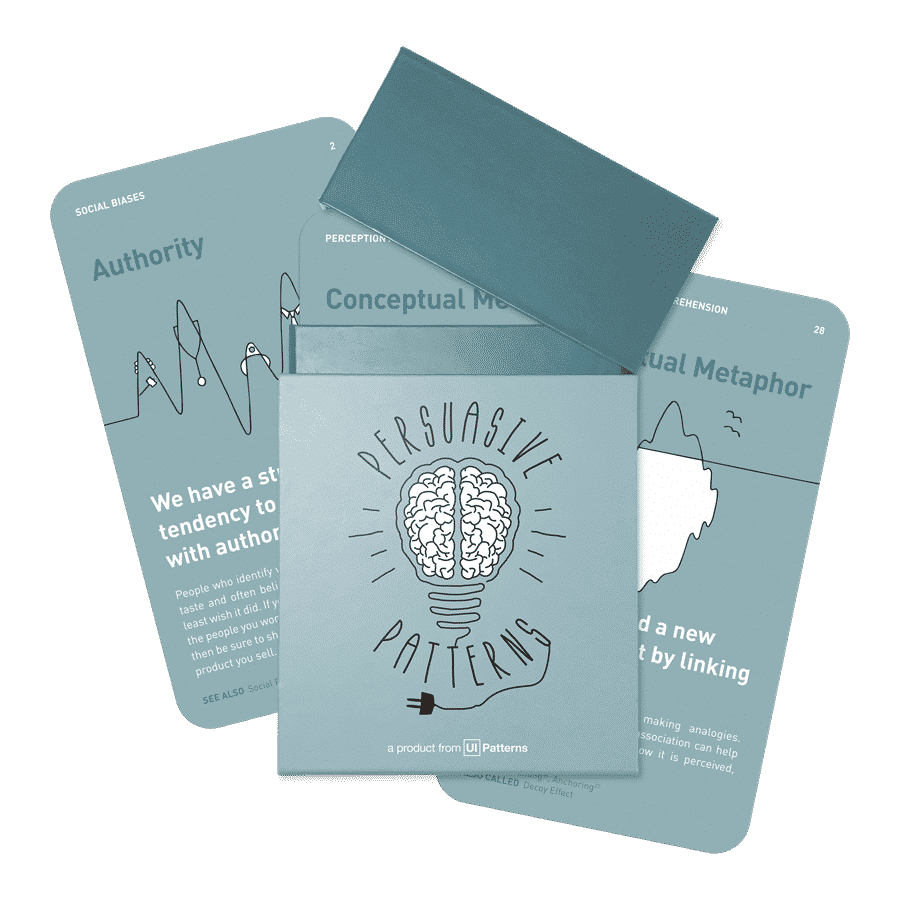The psychology of sustainable consumption
Drive sustainable consumer behavior through storytelling, cognitive dissonance, and social proof.
Turn insights into action with the Persuasive Patterns card deck
Master the science behind user motivation and create products that drive behavior.
Get your deck!When we design products, we have a unique opportunity to shape consumer behavior and drive positive change. One area where our influence can be particularly impactful is in promoting recycling. By understanding the psychological factors that influence recycling behavior, we can design products and experiences that encourage consumers to make sustainable choices.
One of the most fascinating findings from research on recycling psychology is the significant role of social identity in shaping behavior. People are more likely to recycle when they identify themselves as environmentalists or when they belong to groups that promote recycling. This suggests that we can encourage recycling by tapping into people’s sense of belonging and connection to a larger community.
Consider your target users. How can you strengthen their identity as environmentally responsible individuals through your product design?
A powerful tool to influence a social identity that promotes recycling is storytelling. By crafting compelling narratives that highlight the positive impact of recycling and the negative consequences of waste, we can evoke emotions and inspire action.
For example, sharing stories about marine animals affected by plastic pollution can make the issue more relatable and urgent. This emotional connection can motivate users to participate in recycling programs integrated into your product.
“Stories are remembered up to 22 times more than facts alone. They engage emotions, which are powerful drivers of decision-making.” — Dr. Paul Zak, Neuroeconomist (Zak, 2014)
Creating Cognitive Dissonance to motivate change
These narratives not only engage emotions but also help create cognitive dissonance. Cognitive dissonance arises when there is a conflict between an individual’s beliefs and their actions. If someone believes in protecting the environment but doesn’t recycle, this inconsistency creates psychological discomfort.
To alleviate this discomfort, individuals are motivated to change their behavior to align with their beliefs. By highlighting this discrepancy, we can motivate consumers to adopt more sustainable practices.
Highlight discrepancies. Use messaging that gently points out inconsistencies between users’ environmental values and their actions.
Offer solutions. Provide easy ways within your product to resolve this dissonance, such as simple recycling options or reminders.
Engage with the audience. Are there features you can add that help users align their actions with their environmental beliefs?
Incorporating social proof into our designs and communications can significantly influence recycling behavior. Social proof is the psychological phenomenon where people look to others to determine the correct behavior in a given situation.
Implementing these strategies not only advances sustainability but also offers substantial benefits for your product’s success. By tapping into social dynamics, you enhance user engagement, as users become more interactive with a product that resonates with their values. Encouraging shared values fosters a sense of community, building a loyal user base committed to your product’s mission. Moreover, integrating sustainability features differentiates your product in the market, setting it apart from competitors and appealing to consumers who prioritize environmental responsibility.
For instance, displaying the number of users who have participated in recycling initiatives within your app can encourage others to do the same.
“People are especially likely to perform certain actions if they can relate to the people who performed the same actions before them.” — Dr. Robert Cialdini, Author of Influence: Science and Practice (Cialdini, 2009)
Display participation rates. Show real-time stats of users engaging in sustainable actions.
Share success stories. Highlight testimonials from users who have made a positive impact.
Patagonia urged consumers to consider the environmental impact of their purchases, promoting recycling and repairing over buying new. This campaign leveraged cognitive dissonance by highlighting the conflict between consumerism and environmentalism, motivating customers to align their buying habits with their environmental beliefs.
Starbucks offers discounts to customers who bring reusable cups. By displaying the collective impact of this initiative (e.g., cups saved from landfills), they use social proof and reinforce social identity tied to sustainability.
By understanding the psychology of recycling and leveraging strategies such as storytelling, cognitive dissonance, and social proof, we can create products and experiences that inspire and motivate consumers to recycle.
Key takeaways:
- Strengthen social identity
- Design features that allow users to express their commitment to the environment (e.g., profile badges, shareable achievements).
- Use storytelling
- Integrate narratives that highlight the impact of recycling and the consequences of inaction.
- Create cognitive dissonance
- Gently highlight discrepancies between users’ values and actions, offering solutions within your product.
- Leverage social proof
- Display statistics or testimonials that show widespread adoption of recycling behaviors among users.
- Make recycling accessible
- Integrate easy-to-use recycling options within your product or service.
- Steg, L. (2005). The role of social identity in recycling behavior. Journal of Environmental Psychology, 25(3), 219–230.
- Zak, P. J. (2014, October 28). Why your brain loves good storytelling. Harvard Business Review.
- Cialdini, R. B. (2009). Influence: Science and practice (5th ed.). Allyn & Bacon.
- Don't buy this jacket, Black Friday and the New York Times. Patagonia by Patagonia
- Starbucks: Our Environmental Promise: Give more than we take

